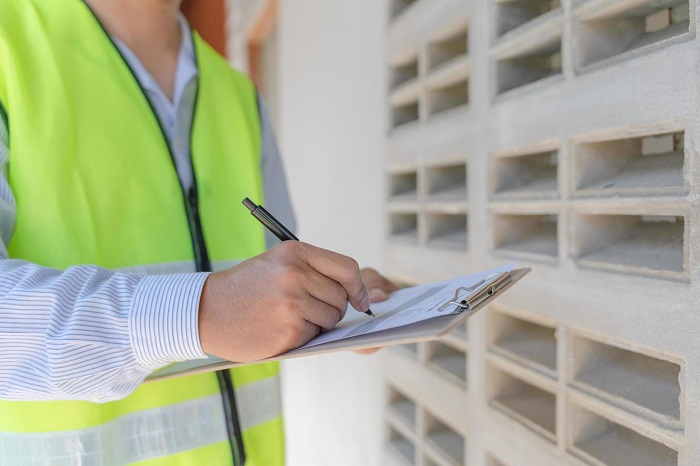Property management is not just about addressing tenant concerns when they arise; it’s about anticipating issues before they become costly problems. A property management preventive maintenance checklist is an essential tool for any property manager, helping ensure properties are well-maintained and tenants remain satisfied. By being proactive with maintenance, property managers can avoid emergency repairs, reduce long-term costs, and protect the property’s value.
In this article, we’ll walk through the key tasks involved in creating a comprehensive property management preventive maintenance checklist. We’ll cover everything from routine inspections to seasonal tasks, offering practical tips for managing both single-family homes and multifamily units. Whether you manage one property or an extensive portfolio, this guide will help you streamline your operations and maintain your properties in optimal condition year-round.
Why Preventive Maintenance Is Essential for Property Managers?
Preventive maintenance is an essential part of property management, ensuring that rental properties remain in top condition while minimizing repair costs and extending the life of key systems. Regularly scheduled maintenance helps property managers stay ahead of issues that could cause long-term damage or disrupt tenants.
Reducing Unexpected Repair Costs
By addressing minor issues before they become major problems, preventive maintenance can save significant amounts of money. For example, a small plumbing leak can quickly escalate into water damage that costs thousands to repair. Routine checks and repairs prevent these emergencies from happening.
Increasing Tenant Satisfaction
A well-maintained property is essential for tenant retention. When tenants feel their needs are being met and the property is being well-maintained, they are more likely to renew their lease. Regular maintenance ensures tenants have a safe and comfortable living environment, leading to higher satisfaction and fewer complaints.
Maintaining Property Value
A property that is well-maintained not only attracts better tenants but also retains its value over time. Preventive maintenance helps preserve the property’s condition, ensuring it remains marketable if you ever decide to sell. Regular inspections and maintenance keep the property appealing to both current and prospective tenants.
By following a property management preventive maintenance checklist, property managers can stay organized and on top of regular tasks, avoiding unnecessary surprises and keeping everything running smoothly.
Key Elements of a Property Management Preventive Maintenance Checklist
A well-organized property management preventive maintenance checklist ensures that all critical areas of the property are regularly inspected and maintained. The checklist typically includes the following categories:
- HVAC System Maintenance: Regular maintenance is vital to ensure efficient operation and longevity. This includes changing filters, checking ducts for leaks, and servicing the units before each heating and cooling season.
- Plumbing and Water Systems: Plumbing issues can lead to expensive repairs if not addressed promptly. Check pipes for leaks, test faucets, and inspect water heaters to ensure everything is in working order. Regular plumbing maintenance prevents blockages and water damage.
- Electrical System Inspections: Electrical systems need to be checked regularly to prevent potential safety hazards. Inspect outlets, light fixtures, circuit breakers, and wiring for any signs of wear or damage. Ensuring that electrical systems are up to code reduces the risk of fires or electrical failures.
- Roof and Gutter Maintenance: Roof and gutter inspections are crucial for preventing water damage and maintaining the property’s exterior. Clean gutters regularly, check for roof leaks or damage, and ensure downspouts are free of obstructions.
- Pest Control: Regular pest control inspections are essential to prevent infestations. Schedule routine inspections for rodents, insects, and other pests that could damage the property or affect tenants’ health.
- Safety and Security Systems: Check smoke detectors, carbon monoxide detectors, fire extinguishers, and any security systems installed on the property. Ensuring safety equipment is functioning properly is crucial for both tenant safety and compliance with local regulations.
By organizing these tasks into a property management preventive maintenance checklist, you can ensure that nothing is overlooked and that maintenance is carried out in a timely and efficient manner.
How to Create a Property Management Preventive Maintenance Checklist?
Creating a practical preventive maintenance checklist for property management requires understanding each property’s unique needs. Here are the key steps to build your checklist:
- Assess the Property’s Features: Evaluate the age and condition of key systems —HVAC, plumbing, and electrical —and the exterior elements, such as the roof and landscaping.
- Determine Frequency: Decide how often each maintenance task should be performed. For example, HVAC filters may need to be changed every 3 months, while roof inspections may only be necessary annually.
- Prioritize Tasks: Identify which maintenance tasks are critical for tenant safety and property longevity. Tasks such as fire safety checks and plumbing inspections should take precedence.
- Use Technology to Track Progress: Property management software can help you track maintenance schedules, send reminders, and document completed tasks for future reference.
By organizing your property management preventive maintenance checklist this way, you ensure that every critical task is covered and nothing is missed. Also, for any legal concerns related to tenant agreements or property management disputes, understanding the Lawyers Worth of legal counsel can help you decide when to seek legal help.
How Preventive Maintenance Contributes to Tenant Retention?
Tenant retention is a significant concern for property managers, and preventive maintenance plays a significant role in keeping tenants happy. When tenants feel their needs are being met and that the property is well cared for, they are more likely to stay long-term.
Benefits of Preventive Maintenance for Tenant Retention:
- Fewer Complaints and Maintenance Requests: By addressing issues before they become noticeable problems, you reduce the frequency of tenant complaints and repair requests.
- A Safer Living Environment: Regular inspections and maintenance prevent safety hazards, ensuring tenants feel secure in their homes.
- Improved Comfort and Satisfaction: Properly functioning HVAC, plumbing, and electrical systems contribute to a more comfortable living environment, thereby enhancing tenant satisfaction.
Investing in regular preventive maintenance is one of the most effective strategies for keeping tenants happy and reducing turnover.
Tools and Technology to Support Preventive Maintenance
Property management software and apps can significantly enhance the effectiveness of a property management preventive maintenance checklist by automating reminders and tracking maintenance schedules.
Property Management Software
Tools like Appfolio, Buildium, and TenantCloud offer features for tracking preventive maintenance tasks, sending reminders, and storing maintenance records. These tools help property managers stay organized and ensure that no tasks are forgotten.
Maintenance Apps for Residents
Using apps like RentCheck or zInspector, property managers can ask tenants to complete self-inspections, making it easier to monitor property conditions. These apps also allow tenants to report issues promptly, reducing the risk of neglected maintenance.
Conclusion
A property management preventive maintenance checklist is an essential tool for any property manager looking to maintain property value and improve tenant satisfaction. Regular maintenance tasks, such as HVAC servicing, plumbing inspections, and roof checks, help prevent costly repairs and ensure that tenants have a safe and comfortable living environment.
By adopting a proactive maintenance approach and using the right tools and technology, property managers can streamline operations, reduce costs, and enhance tenant retention. Preventive maintenance is not just about keeping the property in good shape—it’s a strategic approach that benefits everyone involved.
FAQ’s
What is preventive maintenance in property management?
Preventive maintenance in property management involves regular inspections and maintenance tasks designed to identify and address potential issues before they become significant problems, ultimately extending the life of the property.
How often should preventive maintenance be done?
The frequency of preventive maintenance depends on the task type. For example, HVAC maintenance might be done twice a year, while plumbing and roof inspections may be annual. Refer to your property’s specific needs to create a schedule.
What are the key tasks in a preventive maintenance checklist?
Key tasks include HVAC system maintenance, plumbing inspections, roof and gutter inspections, pest control, safety system checks, and general property upkeep, such as landscaping and appliance servicing.
How does preventive maintenance help with tenant retention?
By ensuring the property remains in good condition, preventing issues before they arise, and improving safety and comfort, preventive maintenance helps create a positive living experience, leading to higher tenant satisfaction and longer leases.
Can technology help manage preventive maintenance?
Yes, property management software and apps can automate maintenance schedules, track tasks, and even allow tenants to report issues, making the process more efficient and streamlined for both property managers and tenants.












Leave a Reply